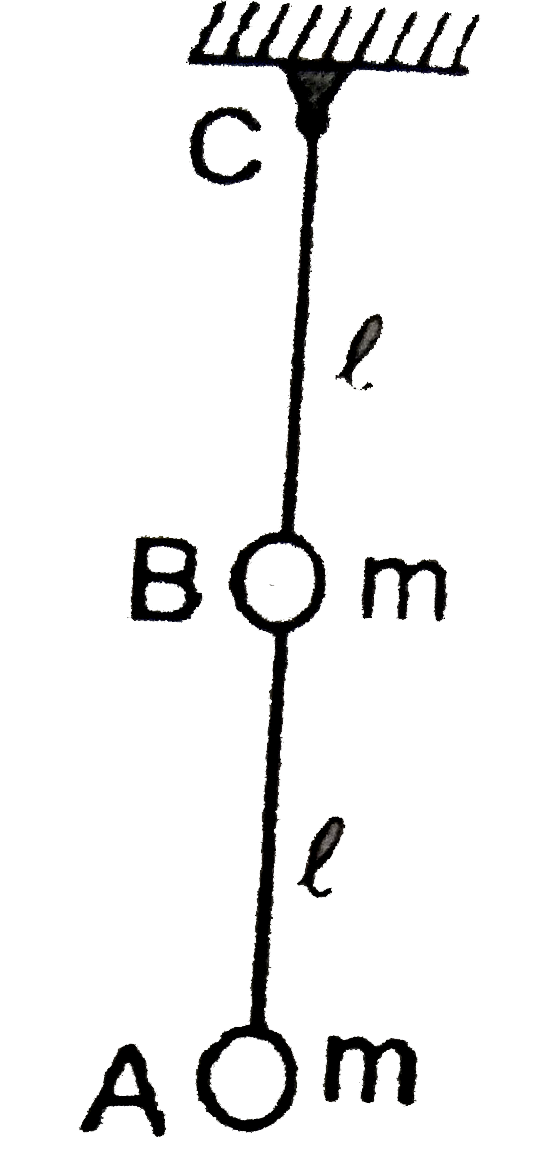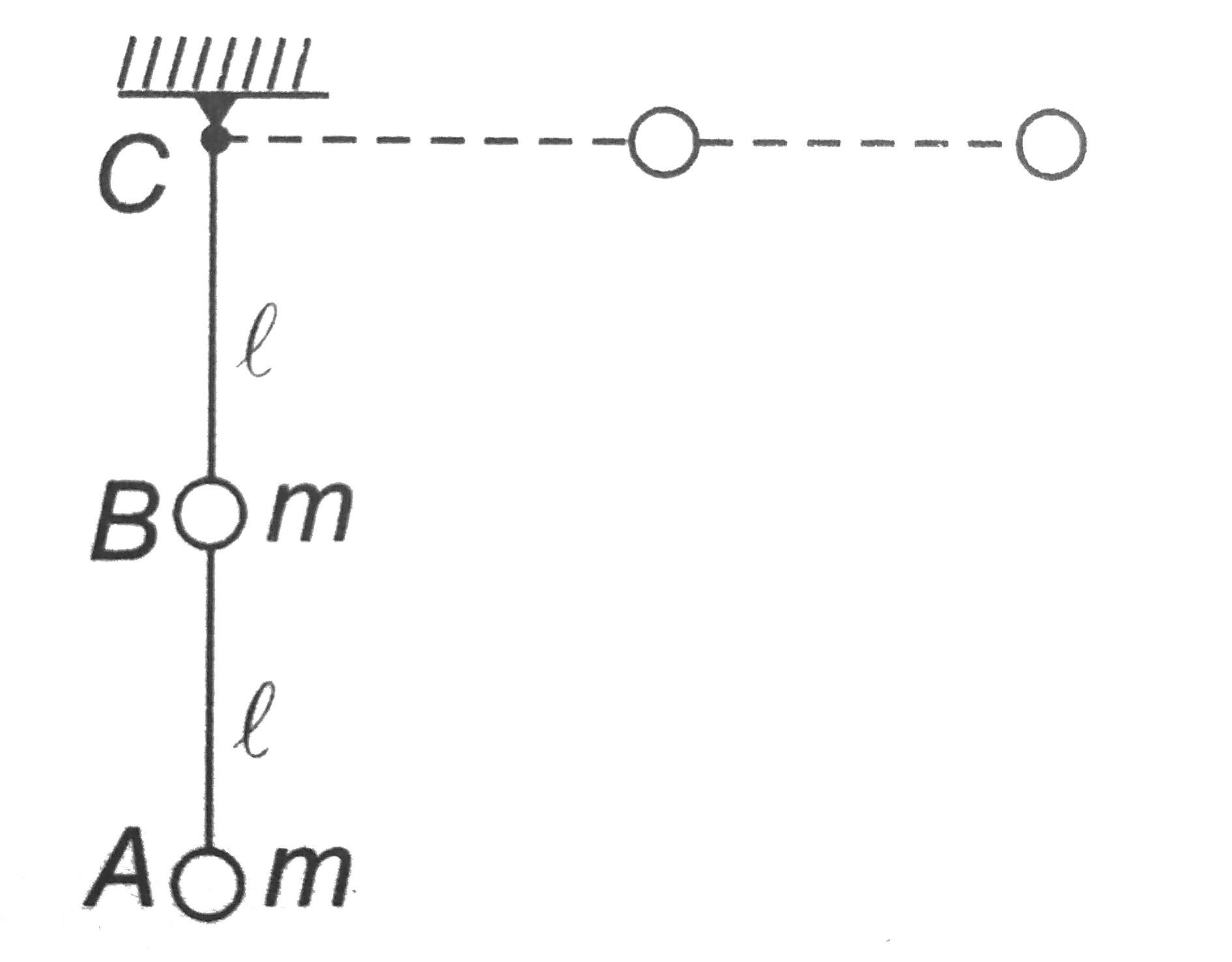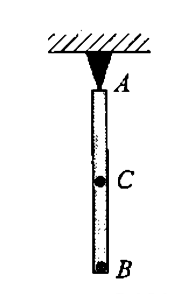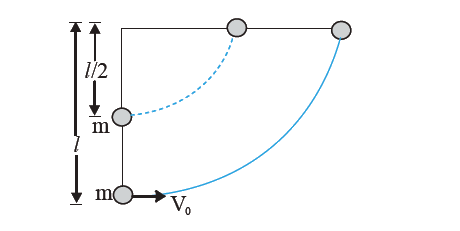A weightless rod of length l carries first a mass 2 m at its end and then two equal masses m one secured at the end and other in the middle of the rod. The rod can revolve in a vertical plane around the pointA. what horizontal velocity must be imparted to the end of the rod C in the first and second cases to defect it to the horizontal position?

v1=√2gl,v2=√12gl5
Topper's Solved these Questions
Similar Questions
A weightless rod of length l carries two equal masses m one fixed at the end and other in the middle ofhte rod. The rod can revolve in a vertical plane about A. Then, horizontal velocity which must be imparted to end C of rod to deflect it to horizontal position is

View SolutionA weightless rod of length 2l carries two equal masses 'm' , one secured at lower end A and the other at the middle of the rod at B. The rod can rotate in vertical plane about a fixed horizontal axis passing through C. What horizontal velocity must be imparted to the mass at A so that it just completes the vertical circle.

View Solution
Knowledge Check
A weightless rod of length l carries two equal masses m one fixed at the end and other in the middle ofhte rod. The rod can revolve in a vertical plane about A. Then, horizontal velocity which must be imparted to end C of rod to deflect it to horizontal position is
 A√125glB√3glC√165glD√2gl
A√125glB√3glC√165glD√2glA weightless rod of length 2l carries two equal masses 'm', one tied at lower end A and the other at the middle of the rod at B. The rod can rotate in vertical plane about a fixed horizontal axis passing thriugh C . The rod of is released from rest in horizontal possion. The speed of the mass B at the instant rod become vertical is:
 A√3gl5B√4gl5C√6gl5D√7gl5
A√3gl5B√4gl5C√6gl5D√7gl5A weightless rigid rod AB of length / connects two equal masses m one particle is fixed at the end B and the other at the middle ofthe rod as shown in the figure-5.131. The rod can rotate in the vertical plane freely around the hinge point/4. Choose the correct option(s)
 AThe minimum horizontal velocity required to be given to the particle B so as to make the rod go around in the complete vertical circleisBThe minimum horizontal velocity required to begivento the particle B so as to make the rod go around in the complete vertical circle isCThe ratio of compressive force in the rods AC and BC is 2 : 1 when the masses are at highest point.DThe ratio of compressive force in the rodsA
AThe minimum horizontal velocity required to be given to the particle B so as to make the rod go around in the complete vertical circleisBThe minimum horizontal velocity required to begivento the particle B so as to make the rod go around in the complete vertical circle isCThe ratio of compressive force in the rods AC and BC is 2 : 1 when the masses are at highest point.DThe ratio of compressive force in the rodsA
A weightless rod of length 2l carries two equal masses 'm', one tied at lower end A and the other at the middle of the rod at B. The rod can rotate in vertical plane about a fixed horizontal axis passing thriugh C . The rod of is released from rest in horizontal possion. The speed of the mass B at the instant rod become vertical is:

View SolutionA light rod of length l is pivoted at the upper end. Two masses (each m), are attached to the rod, one at the middle and the other at the free end. What horizontal velocity must be imparted to the lower end mass, so that the rod may just take up the horizontal position ?

View SolutionA light rod of length l is pivoted at the upper end. Two masses (each m), are attached to the rod, one at the middle and the other at the free end. What horizontal velocity must be imparted to the lower end mass, so that the rod may just take up the horizontal position ?

View SolutionA rod of length l is released from the vertical position on a smooth horizontal plane. What is the nature of motion of the free end of the rod ?
View SolutionA light rod of length l is pivoted at the upper end. Two masses (each m), are attached to the rod, one at the middle and the other at the free end. What horizontal velocity must be imparted to the lower end mass, so that the rod may just take up the horizontal position?

View Solution
